My Aching Back: Typewriters, Sawed-Off Broom Handles, and Tasers
Imagine that when getting dressed before venturing out each morning, in addition to your regular attire, you must strap two vintage Royal typewriters to your belt. And, prior to slipping on your favorite shirt, your job demands that you Velcro two slabs of dense clay to your torso—one to the front and one to the back. And for good measure, whack off an 18″ portion of your best broom handle and hang it, too, from your belt. Heck, you’ve gone this far, what’s the harm in using a few twist ties to secure a big ‘ol clunky flashlight to a spot beside the broom handle. Well, that’s sort of what it’s like for police officers when they’re dressing for work.
I know, there’s more attached to the duty belt than a sawed-off broom handle and the spouses favorite flashlight. So let’s take a closer peek at all of “that stuff.”
The number of items on an officer’s duty belt depends upon the department’s requirements and/or the officer’s preferences as to what he/she carries in addition to the agency’s minimum standard. Some departments may not allow their officers to carry items that others permit.
Weapon choice is entirely up to individual agencies. Some departments also allow officers to purchase and carry the weapon of their choice.
However, officers must shoot a qualifying score at the range with any and all weapons carried.
It’s standard practice for officers to carry two spare magazines in addition to the one in the weapon.
Most magazine are fitted with small windows (holes) and corresponding numbers to indicate a count of rounds inside.
There are two basic handcuff designs.
Chain-link (top) and hinged (bottom). Chain-link cuffs are easier to apply during a scuffle because the chain allows a bit of flexibility. Hinged cuffs are rigid and do not allow a bad guy to twist and turn his hands. Hinged cuffs are commonly used when transporting prisoners.
Handcuffs are generally worn to the rear, at the center of the back, allows easy reach with either hand.
Several types of handcuff keys are available. The key at the bottom of the image above is the standard key and comes with each new pair of cuffs. The others are available for purchase and are often carried by officers because of the larger and more user-friendly design. Officers sometimes carry an extra key hidden somewhere on the belt or in their clothing.
Officer who carry revolvers (there aren’t many left who carry the “wheel guns”) generally carry a couple of speed loaders. The devices allow officers to reload six rounds at once, instead of having to load one bullet at a time.
The rounds are inserted into each chamber, and then a twist of the knurled knob releases all six rounds at once.
Portable radios are often fitted with a shoulder mic. In addition to the microphone, a small, built-in speaker allows the officer to monitor radio transmissions without having the volume turned up so loudly that everyone in a ten block radius can hear.
Pepper spray is, well, pepper spray. I think you all know its purpose.
Side-handle batons are extremely effective tools. Their use requires special training. The baton pictured above has an expandable tip that extends the length by a few inches, which increases the reach and the level of delivered force.
Many officers carry expandable batons. They’re far less cumbersome and more versatile than the “nightstick-type” baton.
When fully extended, an expandable baton can be used as both a striking and as a defensive tool. When collapsed, an expandable baton is still functional as an effective weapon. However, I won’t reveal those techniques (tricks of the trade, you know).
And, of course, we mustn’t forget the electroshock weapons. Taser (a brand sold by Taser International), for example, is designed for use on non-compliant subjects.
The use of Taser-type weapons has definitely decreased the number of officer injuries. In the old days, we had to physically restrain violent suspects using brute strength, pain compliance techniques, a baton (if we thought about bringing one), and a lot of luck…a whole lot of luck, actually. Having luck on our side was especially fortuitous when working an entire county alone, at night, when all the “full-mooners” were out and about and ready to fight anything and anyone wearing a badge and uniform. Believe me, there’s nothing like arresting a bad guy who outweighs you by 150 lbs., has fists the size and power of portable jackhammers, and a pain threshold of, well, I don’t believe those little darlings know the meaning of pain.
Tasers are generally worn on the officer’s “non-gun” side to avoid the deadly faux pas of grabbing a lethal weapon (firearm) when the situation calls for a non-lethal weapon, and, of course, the same is true in reverse.
I’ve gone home on many occasion with my badge ripped from shirt, my pants torn and muddy and decorated with lovely smears and colors of various grasses and soil. I’ve received bumps, bruises, loss of vision, unconsciousness, knife wounds, etc. But all of my injuries and numerous uniform cleanings and/or replacements could have been avoided had Tasers been available. The same is true for those unruly folks who used us for Saturday night punching bags. A brief shock would more than likely have been preferable to the injuries received from a cop who’s literally fighting for his life. In those instances it’s “anything goes,” to survive.
Anyway, that’s the quick view of Taser use.
So, all total, a complete duty belt tips the scales at 15 or 16 pounds, or thereabouts.
Oh, one last thing. Gravity has a tendency to pull all that weight toward the ground. Therefore, police officers use belt keepers, more commonly called “keepers,” to attach the duty belt snuggly against the belt that’s worn to hold up their uniform pants.
Keepers are thin straps of leather (for use in conjunction with leather duty belts) or nylon (for use with lighter weight nylon duty belts), that loop around both belts. Metal snaps/fasteners secure the two ends of each keeper, holding the two belts together (the top photo in this post clearly shows two keepers at the center of the belt, between two handcuff cases).
You know, it would only take one time of forgetting to wear belt keepers for an officer to learn a hard and valuable lesson. Because, without belt keepers, an officer’s gunbelt would likely fall to his/her ankles, especially during a foot pursuit. Of course, all that gear and leather wrapped around the lower legs would immediately cause the officer to face plant onto the concrete, or into a nice bed of petunias the bad guy easily cleared with a hop, skip, a jump, and an “I’ll see you later,” as he ran away laughing.
Embarrassing to say the least.
Finally, the ballistic vest. It’s basically a four-piece ensemble—front and rear cloth carriers, front and rear Kevlar panels, and a trauma plate (steel or ceramic).
Pictured above are a ballistic vest. The outer coverings you see are the blue cloth carriers w/Velcro straps. Ballistic panels (dense heavy material) are inserted into each carrier and are normally sealed in place by zippers or Velcro. The carriers are machine washable. Bullet-resistant material may only be cleaned with a damp cloth (more on the care of a vest below).
Above is a ballistic panel. The rectangle in the center of the panel is a pocket for the trauma plate.


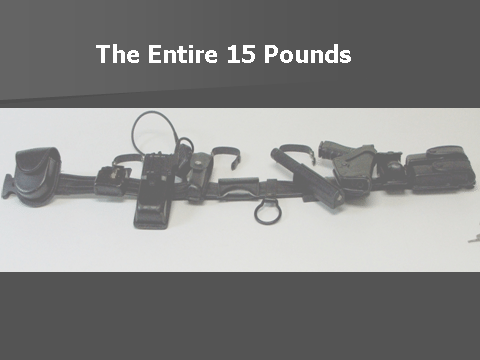

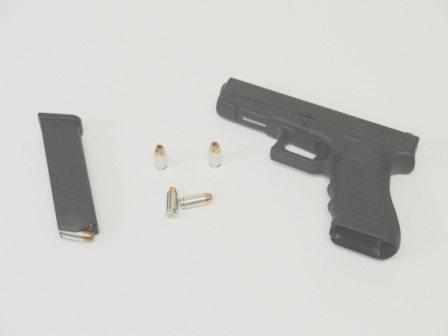
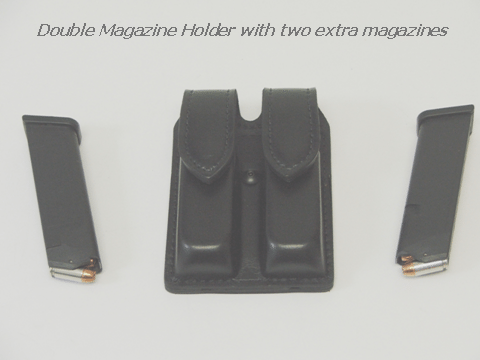
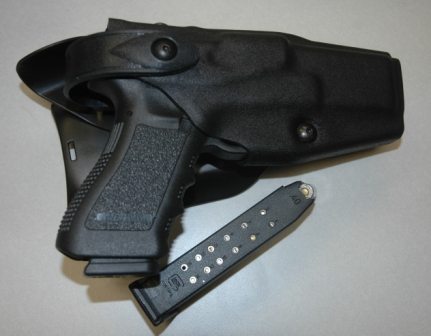
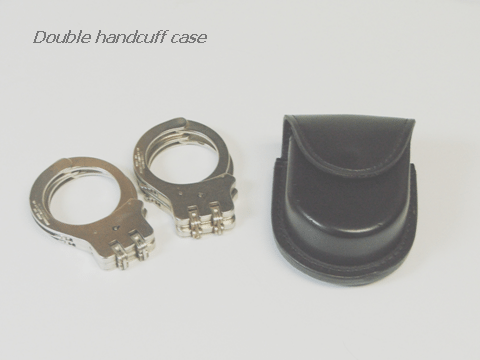
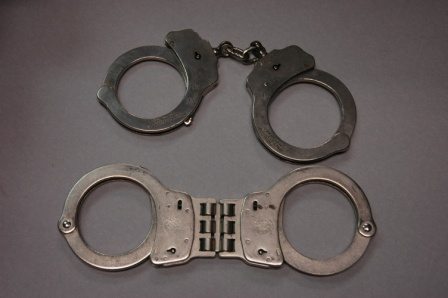
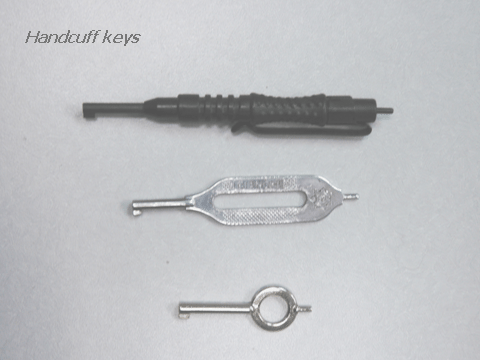

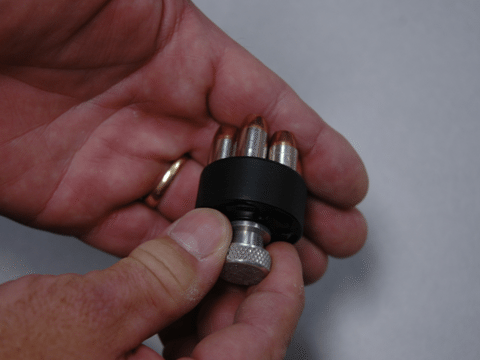

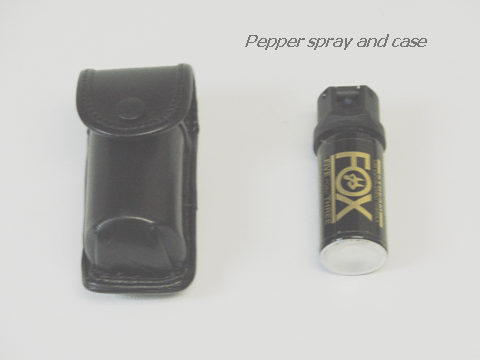

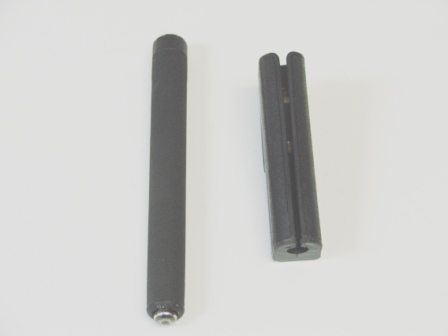
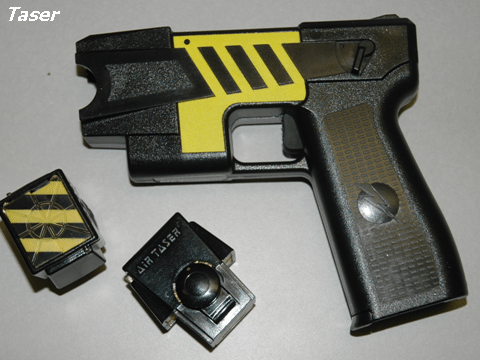
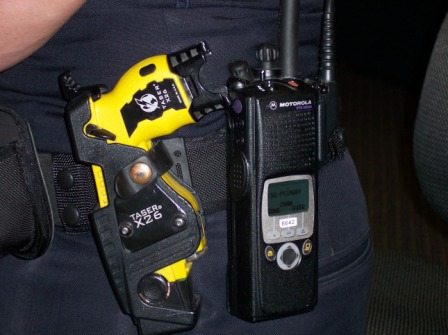
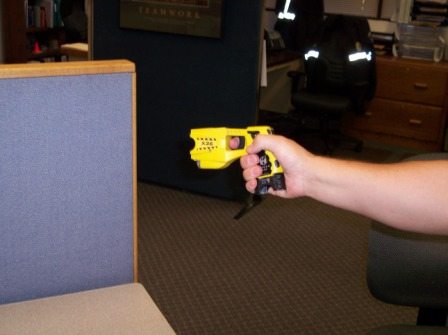


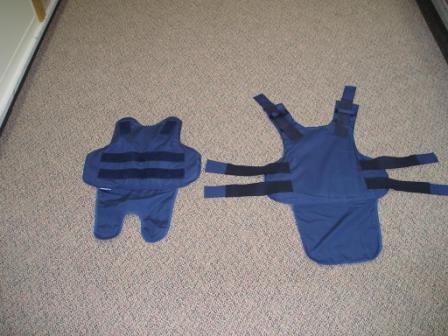
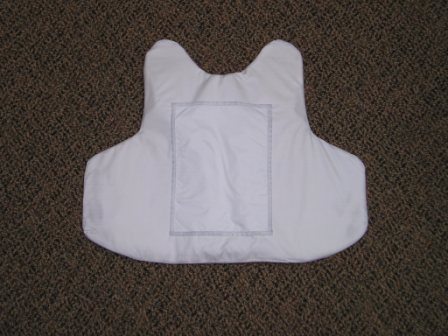



Okay, I give up. How is the side-handle baton an effective weapon? Looks like it would just spin around in your hand. Or is that the secret? Why is it a secret?
Thanks for another fantastic and useful and beautifully presented cluster of detail. Except, about that baton. That’s troubling.
Great details. Pictures speak louder than words. Appreciate it. A keeper.
Lee
Great article and thanks for reminding me just how heavy this thing is around my waist.
Funny how it becomes a part of you and just another tool of the trade.
Thanks again for your work
Scott
Oh another question. How much does the vest weight?
Lee, I have a question on a secondary weapon. If you have a 9 mm with magazines for your first weapon but a small revolver for your second weapon, where would you carry two speed loaders? Or would the secondary use the same rounds as the primary weapons? Do they make a 9 mm that small?
My brother was with the NYPD for 20+ years and we used to have a good laugh about his ‘cop strip-tease’ when he’d get off shift and start taking off everything… Good info!